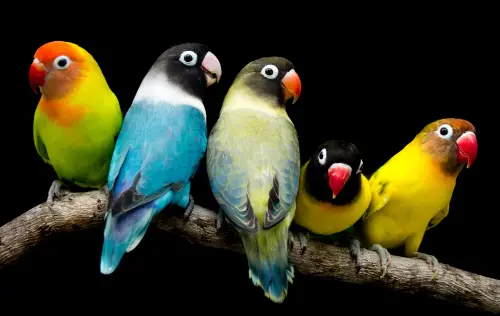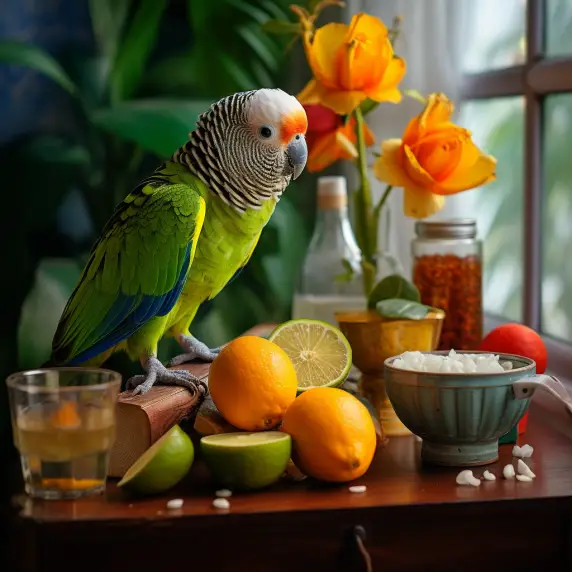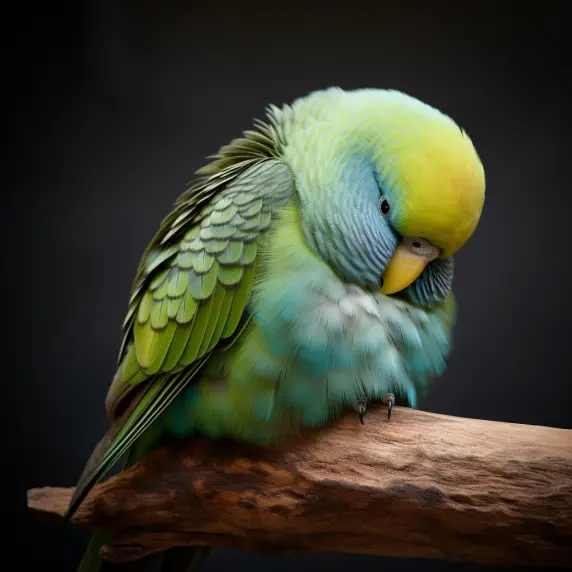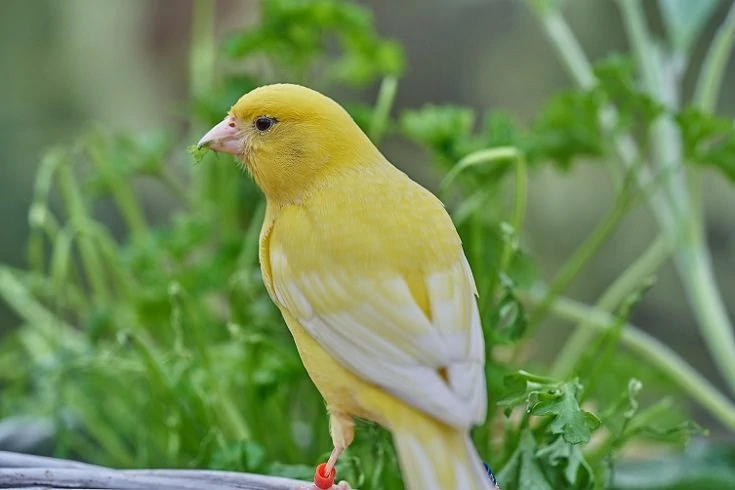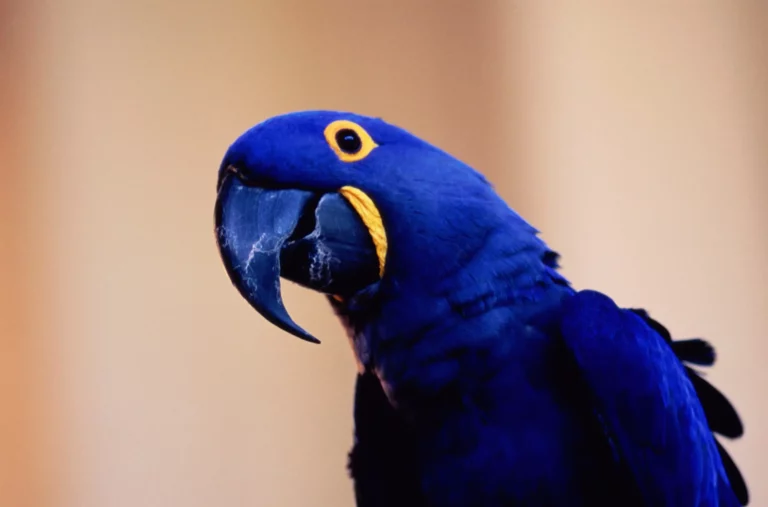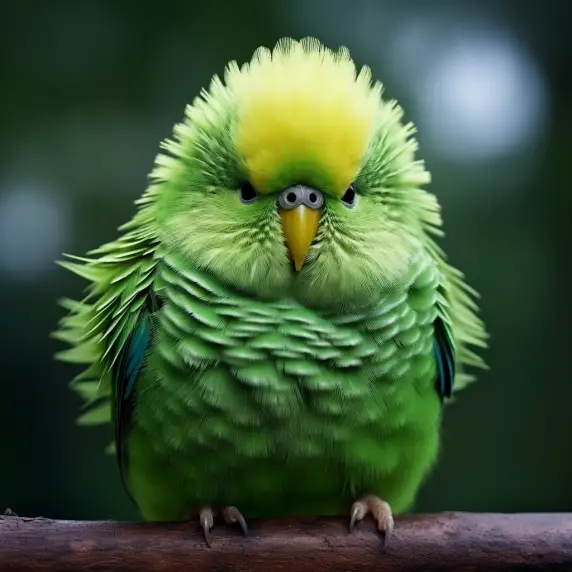How Long Can African Grey Parrots Live as Pets?
African Grey Parrots are well-known for their intelligence, sociability, and long lifespans. A question that many prospective owners ask is: “How long does an African Grey Parrot live?“
This blog post aims to unravel the intriguing world of African Grey Parrots, placing a particular focus on their lifespan. Their longevity is one of many attributes that make these birds such a rewarding choice for pet enthusiasts.
So, if you’re considering an African Grey Parrot as a pet, you’re on the path to a long-term commitment that can bring a great deal of joy. Let’s delve into the details to better understand the lifespan of these fascinating birds.
Key takeaways
African Grey Parrots are renowned for their long lifespans, which can extend up to several decades under optimal care.
Their longevity makes them long-term companions, meaning potential owners should be prepared for a significant commitment.
Understanding the factors that contribute to their long lifespan, such as diet, environment, and mental stimulation, is crucial for any African Grey owner.
The Lifespan of African Grey Parrots in the Home
One of the key attributes that make African Grey Parrots such fascinating pets is their impressive lifespan. When raised in a home setting, these parrots often live between 40 to 60 years. In some instances, with exceptional care, African Greys have been known to live up to 80 years!
Several factors contribute to an African Grey’s extended lifespan in a home environment. First, the lack of predators is a significant benefit. This security, coupled with a balanced diet, can substantially extend their lifespan.
Owners can control their parrot’s food intake, ensuring they receive a diverse diet rich in fruits, vegetables, and high-quality bird pellets. In addition, a stable environment free from harsh weather conditions or illnesses promotes longevity.
Regular visits to an avian veterinarian can also make a significant difference. These check-ups allow for early detection of potential health issues, further increasing the bird’s lifespan.
African Grey Parrots: An In-Depth Profile
Known for their distinctive, beautiful plumage and sharp intellect, African Grey Parrots are one of the most sought-after pet birds worldwide. They are indigenous to the rainforests of West and Central Africa, thriving in regions dense with old-growth trees.
African Grey Parrots are famed for their grey feathers, which cover most of their body, while their tails are strikingly red. Their average weight is about 400 to 600 grams, and they typically measure around 33 cm in length.
These parrots display a marked sexual dimorphism, although males are slightly larger with a broader head and beak.
What sets African Grey Parrots apart from other parrot species is their astonishing intelligence and cognitive abilities. Their intellectual capacities are often likened to those of a five-year-old human child.
They possess the ability to mimic human speech, understand the meaning of words, recognize colors and shapes, and even demonstrate rudimentary problem-solving skills.
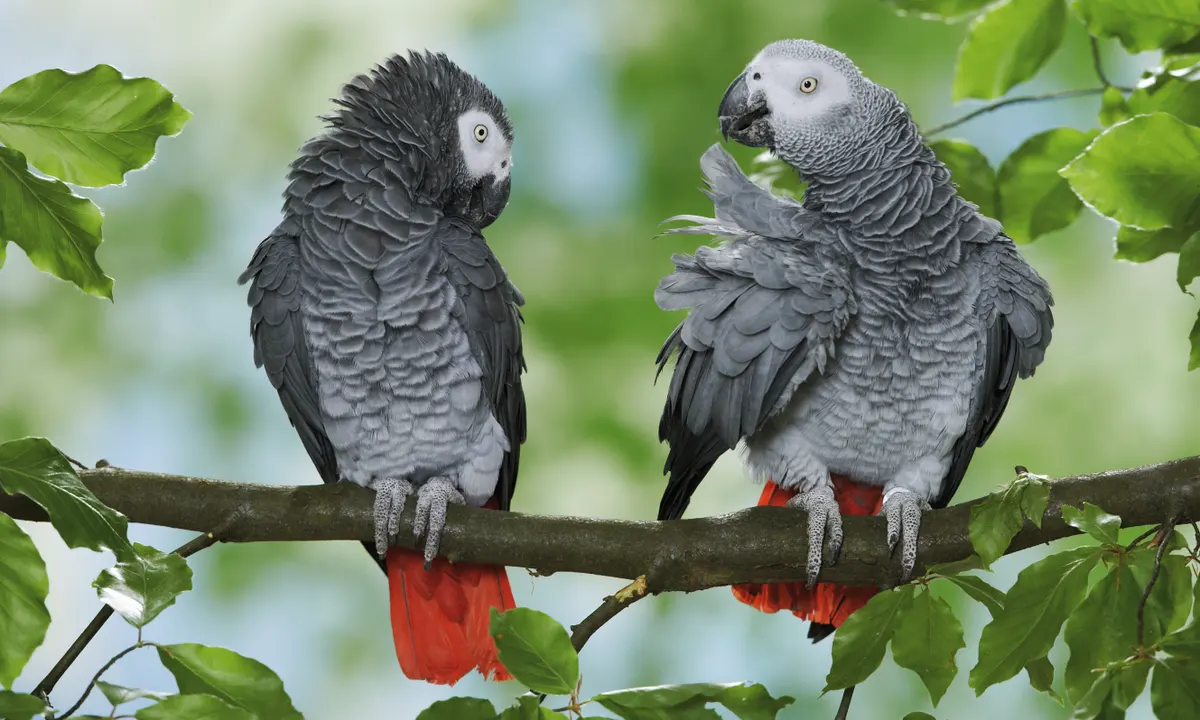
Congo African Grey Lifespan in Captivity
A subspecies of African Grey Parrots, the Congo African Grey, is notably the larger and more popular variant in the pet industry. They have a reputation for being robust and adaptable, which contributes to their ability to live a substantial amount of time in captivity.
With proper care, the lifespan of a Congo African Grey Parrot in captivity can easily reach between 40 to 60 years. However, there have been instances of these parrots living well beyond this range, with some even surpassing the age of 80!
It’s important to note that lifespans can be significantly influenced by various factors, including diet, exercise, mental stimulation, and healthcare.
As a Congo African Grey Parrot owner, ensuring your pet’s longevity means committing to a lifetime of care. This involves providing a balanced diet, regular veterinary check-ups, and plenty of mental stimulation to keep them happy and healthy.
Understanding Age Stages in African Grey Parrots
Just as humans experience different stages of development and aging, so do African Grey Parrots. Each stage brings a distinct set of behaviors, dietary needs, and health considerations, making it crucial for owners to be well-versed in their parrot’s life cycle.
1. Hatchling (0-3 weeks): African Grey Parrots are born blind and featherless. They depend completely on their parents for warmth and food.
2. Nestling (3 weeks-3 months): They begin to open their eyes and develop pin feathers. At this stage, they start exploring their surroundings but still need their parents for food and protection.
3. Fledgling (3-4 months): Their feathers are fully formed, and they start to venture out of the nest, learning to fly and becoming more independent.
4. Juvenile (4 months-1 year): This is the ‘teenage’ stage. They become more active, and curious, and may start mimicking sounds.
5. Adult (1-5 years): African Greys reach sexual maturity. They display increased cognitive abilities, including learning human languages.
6. Senior (40+ years): The parrots experience a decline in their activity levels, may face age-related health issues, and need extra care.
Understanding these age stages not only helps ensure that your African Grey Parrot is receiving appropriate care throughout its life but also helps you anticipate and respond to its changing needs.
A Look at the African Grey Parrot’s Intelligence
The African Grey Parrot’s longevity is only one facet of their fascinating character. Their intelligence is another trait that truly sets them apart in the avian world. With cognitive abilities comparable to a young human child, these parrots are known for their exceptional problem-solving skills and ability to understand abstract concepts.
They are often hailed as the “Einstein” of the bird world, due to their incredible ability to mimic human speech with an extensive vocabulary. But their intelligence extends beyond just mimicry. Some African Greys have been observed to use language contextually, demonstrating an understanding of the meaning behind the words.
A famous example of African Grey’s intelligence is Alex, a parrot who was trained by animal psychologist Dr. Irene Pepperberg. Alex could identify different colors and shapes, understand concepts of ‘bigger’ and ‘smaller’, and even express his feelings and desires – truly remarkable feats for an avian species!
Scientific studies also suggest that African Grey Parrots possess emotional intelligence. They display empathy, can perceive human emotions, and react to the moods of their owners.
While their high intelligence makes them engaging companions, it also means they require mental stimulation to prevent boredom and related behavioral issues. Therefore, owning an African Grey Parrot requires a commitment to provide them with an enriched environment, full of toys, puzzles, and interactive playtime.
Impact of Diet on African Grey Parrots Lifespan
The diet of an African Grey Parrot significantly influences its health and longevity. These birds need a well-balanced and varied diet to ensure they receive all necessary nutrients for optimal health. An inadequate diet can lead to nutritional deficiencies, health issues, and ultimately, a shortened lifespan.
African Grey Parrots primarily thrive on a diet of pellets, which should make up approximately 60-70% of their food. These pellets are specially formulated to provide a complete and balanced diet for parrots. However, a diet of exclusively pellets can be monotonous, leading to boredom and refusal to eat. Therefore, variety is key.
The remaining 30-40% of their diet should consist of fresh fruits and vegetables. Apples, bananas, oranges, strawberries, carrots, peas, and leafy greens like spinach and kale are excellent choices.
However, some foods, like avocados, chocolates, and any food with high salt or sugar content, are toxic to parrots and must be avoided.
Adding a moderate amount of seeds and nuts to their diet also benefits African Greys. They particularly enjoy sunflower seeds, almonds, and walnuts, but these should be given sparingly due to their high fat content.
In addition to food, African Greys need access to clean, fresh water at all times. They also benefit from a mineral block or cuttlebone to help meet their calcium needs, crucial for their overall health and longevity.
Remember, a well-fed African Grey Parrot is likely to be a happy and long-lived one. Therefore, understanding and providing for their dietary needs is paramount to their well-being.
Role of Exercise and Mental Stimulation on Lifespan
Physical exercise and mental stimulation are paramount for the health and longevity of African Grey Parrots. In the wild, these birds would spend a significant portion of their day flying, foraging for food, socializing, and engaging in other mentally and physically stimulating activities.
In captivity, it’s up to their caretakers to ensure they receive adequate exercise and enrichment.
Physical exercise is vital to keep an African Grey Parrot’s heart healthy, and its muscles strong, and prevent obesity, a common health issue in pet parrots. Providing opportunities for flight within a safe and controlled environment is one of the best ways to ensure your African Grey gets a good workout.
Climbing toys, ladders, and swings can also be included in their cage to promote physical activity.
Mental stimulation is equally important, especially considering African Grey’s high intelligence. These birds need to be mentally engaged to prevent boredom and associated behavioral problems such as feather plucking and self-mutilation.
Problem-solving toys, foraging activities, training sessions, and social interaction can all contribute to mental stimulation.
Furthermore, consistent interaction with their human family members can significantly enrich an African Grey’s life. They enjoy being included in daily activities and thrive on social interaction.
They are capable of learning words, and phrases, and even understanding complex concepts, which can be encouraged through regular, positive interaction.
In conclusion, providing your African Grey Parrot with ample opportunities for exercise and mental stimulation not only contributes to their overall happiness but also potentially extends their lifespan.
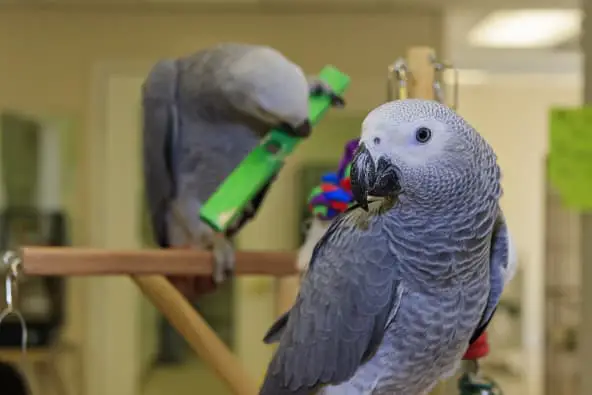
Ageing African Greys: Common Age-Related Problems
As African Grey Parrots age, they may become more susceptible to various health issues, just like any other living beings. Some of the common age-related problems in African Greys include arthritis, heart disease, kidney disease, liver disease, and tumors.
Early detection and management of these conditions can significantly enhance the quality and longevity of your parrot’s life.
Arthritis is a common issue in older parrots. Signs of arthritis may include difficulty moving around the cage, reluctance to exercise, and changes in perching behavior.
Modifications to their environment, like providing lower perches and easier access to food and water, can make a big difference to an arthritic parrot. Regular vet check-ups can help in early detection and effective management of arthritis.
Heart disease, much like in humans, can also be a concern in older African Grey Parrots. This condition may not show obvious signs until it’s fairly advanced. Regular veterinary check-ups and blood tests can help detect any abnormality early.
Kidney and liver diseases are also not uncommon in older African Greys. Symptoms may include loss of appetite, weight loss, changes in droppings, or increased thirst. It’s crucial to seek veterinary care if you observe any such changes in your parrot.
Tumors may also occur in older parrots. Lumps or changes in your parrot’s body should always be investigated by a vet.
It’s important to note that a healthy diet, regular exercise, mental stimulation, and regular vet check-ups can help prevent many of these age-related issues or at least help in their early detection and management. Remember, your African Grey Parrot is dependent on you for its health and well-being.
Regular Veterinary Care: Key to a Healthy and Long Life
Regular veterinary care is an integral part of ensuring your African Grey Parrot enjoys a long and healthy life. With their remarkable lifespan, these birds require routine check-ups and preventative healthcare that can help identify potential issues before they become serious problems.
Typically, it is recommended to have your African Grey examined by a veterinarian specializing in avian care at least once a year. These annual exams often include a physical examination, weight check, blood tests, and fecal analysis.
They provide a complete health assessment and can help detect early signs of illness that might not be visible to even the most observant pet owners.
The physical examination involves a thorough look at your parrot’s eyes, beak, feathers, skin, and overall body condition. This can reveal issues like infections, parasites, skin disorders, or injuries. The vet will also observe your parrot’s behavior and breathing, which can provide clues about its overall health.
Weight checks are essential as weight loss can be an early sign of disease in birds. Regular weight monitoring can help identify any changes early, leading to timely intervention.
Blood tests provide valuable information about your parrot’s internal health, including kidney and liver function, blood sugar levels, and the presence of any infections. Fecal analysis can help identify any gastrointestinal parasites or infections.
In addition to routine check-ups, it’s crucial to take your African Grey to the vet if you notice any changes in behavior, eating habits, droppings, or general appearance. Early detection and treatment of health issues can significantly improve the prognosis and contribute to your parrot’s longevity.
Remember, providing the best veterinary care for your parrot is a long-term commitment, but one that can lead to a rewarding and enriching experience for both you and your feathery friend.
The Interplay between Housing Conditions and Lifespan
The living conditions of your African Grey Parrot have a significant impact on its overall health and, consequently, its lifespan. A well-maintained, safe, and enriching environment not only makes your parrot’s life comfortable but also keeps it physically fit and mentally stimulated, contributing to a longer, healthier life.
Cage Size and Layout
The cage for an African Grey Parrot should be spacious enough for it to move freely and extend its wings fully. The ideal cage size should be at least 2x2x3 feet, although larger is always better. The cage layout should allow room for multiple perches of varying sizes and materials, stimulating the parrot’s foot health.
Cage Location
Place the cage in a quiet, well-lit area away from drafts, direct sunlight, and kitchen fumes. Parrots are social creatures, so consider a location where your parrot can see and interact with family activities. However, ensure it also has a peaceful corner to retreat to when needed.
Cage Cleanliness
Maintaining cleanliness in the cage is essential to prevent bacterial and parasitic infections. Regularly clean the cage, perches, toys, and food and water dishes with bird-safe disinfectants. Replace the cage lining often to monitor your bird’s droppings for any health issues.
Enrichment
To cater to the intellectual needs of an African Grey, provide a variety of toys and regularly rotate them to prevent boredom. Puzzle toys, foraging toys, and chewable wooden toys are excellent choices.
Temperature and Humidity
African Grey Parrots originate from the humid rainforests of Africa. Maintaining a humidity level of 50-70% and a temperature of 65-80°F (18-27°C) can mimic their natural habitat and promote their well-being.
Safety
Safety is paramount. Ensure the cage has secure locks to prevent escape. The cage bars should be sturdy and appropriately spaced to prevent injury. Remove any toxic plants, and be mindful of other pets in the house.
African Grey Parrots are sensitive to aerosols, perfumes, and non-stick cookware fumes. These substances can be detrimental to their health and should be kept away from them.
Frequently Asked Questions
How long can African Grey Parrots live in a home environment?
African Grey Parrots can live for about 40-60 years in a home environment, although there have been instances where they have lived up to 80 years when given optimal care.
What is the oldest recorded age of an African Grey Parrot?
The oldest recorded age of an African Grey Parrot is around 80 years, but such longevity is not the norm and requires exceptional care and a bit of good luck.
How can I prolong the lifespan of my African Grey Parrot?
Providing a balanced diet, ensuring regular exercise and mental stimulation, maintaining a clean and safe environment, and scheduling regular veterinary checkups can help prolong the lifespan of your African Grey Parrot.
What age-related health issues are common in African Grey Parrots?
Some common age-related health issues in African Grey Parrots include arthritis, cataracts, heart disease, and kidney disease.
How does diet impact an African Grey Parrot’s lifespan?
A balanced diet is crucial for an African Grey Parrot’s overall health and longevity. Deficiencies or excesses of certain nutrients can lead to health issues that may shorten their lifespan.
Can regular exercise and mental stimulation extend my African Grey Parrot’s lifespan?
Yes, regular exercise and mental stimulation can contribute to your African Grey Parrot’s overall health and well-being, potentially extending its lifespan.
Do African Grey Parrots require regular vet visits?
Yes, regular vet visits are important to monitor your African Grey Parrot’s health and detect any potential health issues early.
How does the housing environment influence an African Grey Parrot’s lifespan?
The housing environment can significantly influence an African Grey Parrot’s lifespan. A clean, safe, and stimulating environment can contribute to their overall health and well-being.
What is the typical lifespan of a Congo African Grey in captivity?
A Congo African Grey typically lives for about 40-60 years in captivity, but with exceptional care, they can live longer.
Why did my African Grey die suddenly?
There could be several reasons for sudden death in African Grey Parrots, including acute disease, toxin ingestion, or trauma. It’s important to consult with a veterinarian for a proper postmortem examination to understand the exact cause.
Do African Grey Parrots make good pets?
African Grey Parrots make excellent pets for the right owners. They are intelligent, sociable, and highly interactive. However, they require a lot of care, attention, and mental stimulation, making them unsuitable for individuals who cannot devote significant time each day to their care.
How much time should I spend with my African Grey Parrot daily?
You should aim to spend at least 1-2 hours directly interacting with your African Grey Parrot daily. Additionally, they should be allowed several hours outside of their cage under supervision for exercise and exploration.
Conclusion: Embracing the Responsibility of Caring for an African Grey Parrot
When we bring an African Grey Parrot into our homes, we welcome not just a pet, but a companion that will be with us for several decades, given their impressive lifespan. As we’ve seen throughout this guide, the lifespan of an African Grey Parrot, whether it’s in captivity or in a home environment, depends largely on the quality of care it receives.
Understanding the various stages of their life, from juvenile to elder, allows us to provide the appropriate care at each stage. Recognizing their extraordinary intelligence, we’re reminded that they require mental stimulation and social interaction as much as physical care.
Diet plays a vital role in their lifespan, highlighting the need for nutritious food and fresh water. Regular exercise keeps their body healthy, while mental stimulation enriches their mind. Aging comes with its challenges, and being aware of these helps us ensure our parrot’s comfort in their golden years.
Regular veterinary care is of paramount importance. Early detection of issues can prevent major health problems and ensure our feathered friend lives a full and healthy life. The conditions of their housing can significantly impact their lifespan, underlining the necessity of providing a secure, enriching, and clean environment.
In conclusion, the lifespan of an African Grey Parrot can extend to several decades with proper care, attention, and a lot of love. The responsibility may be significant, but the rewards are immense, as you get to share your life with one of the most intelligent and engaging bird species on the planet.

